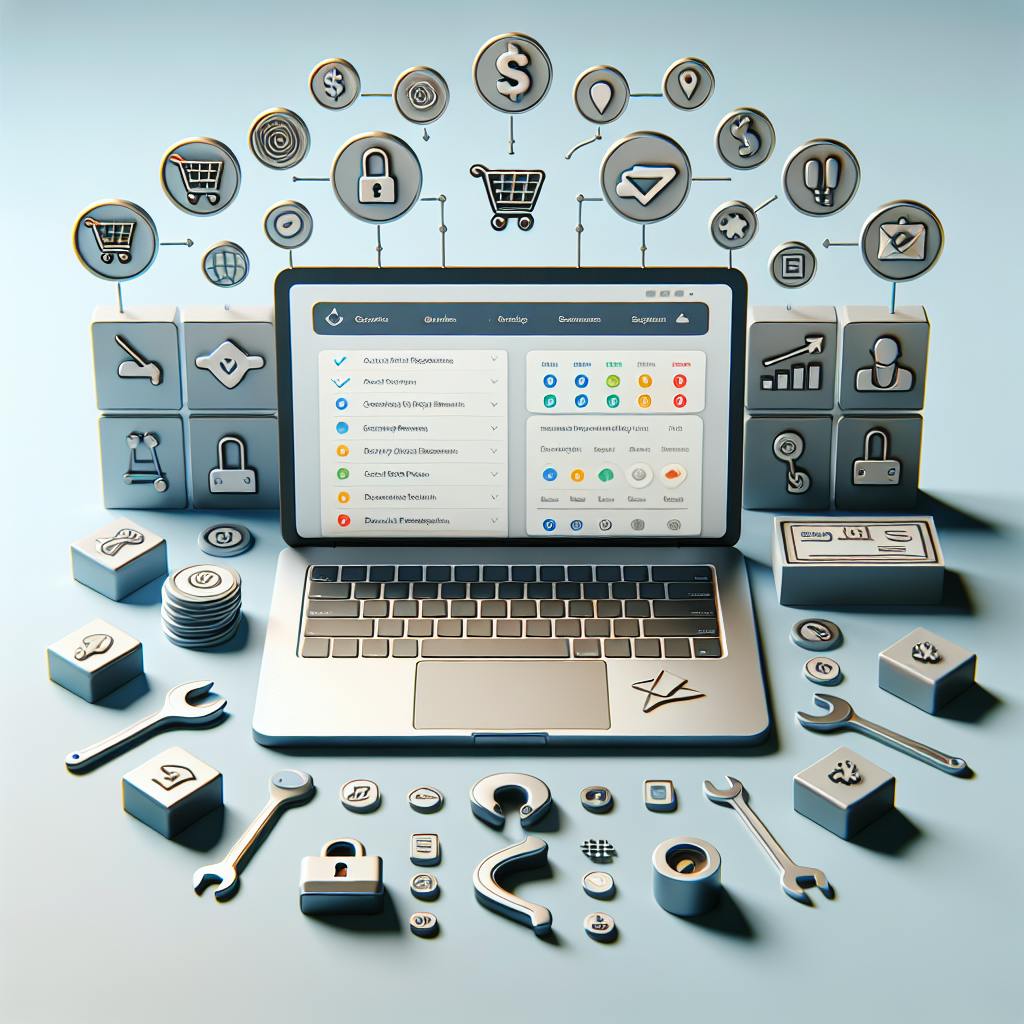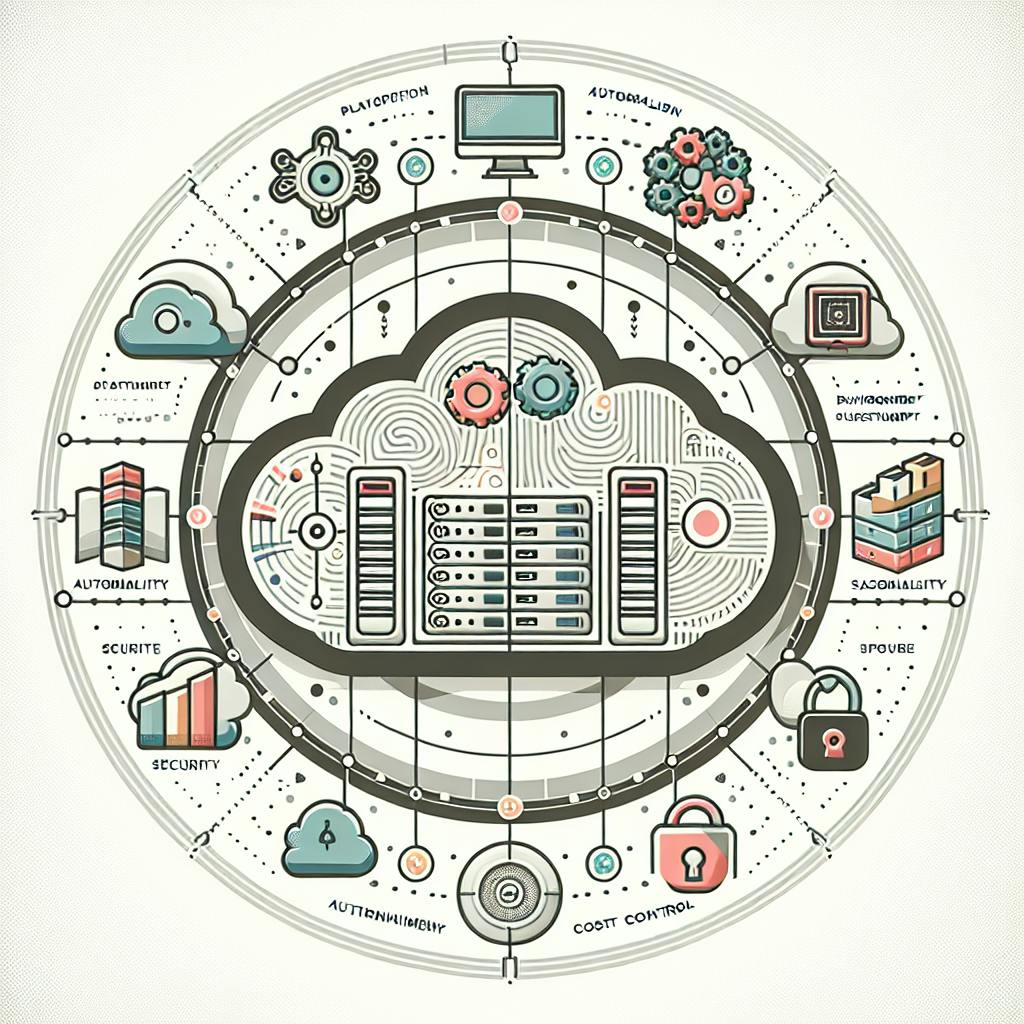Accurately forecasting demand during promotional periods is crucial for businesses to optimize inventory levels, reduce costs, and improve customer satisfaction. This guide covers:
-
Understanding Demand Forecasting: The process of predicting future demand for products or services, especially important during promotions when prices are discounted.
-
Types of Promotions and Success Factors: Common promotional strategies like discounts, BOGO offers, bundled sales, free gifts, loyalty programs, and limited-time offers. Effectiveness depends on product category, customer segment, timing, competition, and marketing efforts.
-
Data Needed for Forecasting: Sales data, inventory levels, promotion details (type, duration, discount, target audience, marketing), and external factors like seasonality and competitor promotions.
-
Forecasting Methods:
- Time-series models: Analyze past sales data to identify patterns and trends
- Regression models: Estimate demand based on promotion variables
- Machine learning models: Handle complex relationships and adapt to new patterns
| Forecasting Method | Pros | Cons |
|---|---|---|
| Time-Series Models | Simple to implement, analyze historical patterns | May not account for external factors |
| Regression Models | Identify effective promotion strategies, estimate demand based on variables | Limited to linear relationships |
| Machine Learning Models | Handle complex relationships, adapt to new patterns, identify interactions | Require large datasets, complex to implement |
-
Evaluating Forecasts and Promotions: Use metrics like Mean Absolute Error (MAE), Mean Absolute Percentage Error (MAPE), and Root Mean Squared Percentage Error (RMSPE) to measure forecast accuracy. Analyze promotion impact on sales, revenue, and profitability using metrics like lift, Return on Investment (ROI), and Gross Margin Return on Investment (GMROI).
-
Managing Inventory and Supply Chain: Increase safety stock levels, plan for buffer stock, coordinate with suppliers, implement vendor-managed inventory (VMI) systems, and leverage real-time data sharing and collaborative forecasting.
-
Continuous Improvement: Monitor promotion performance, update forecast models with new data, and refine promotion strategies based on insights.
-
Future Trends: Advancements in machine learning, AI, real-time data, social media insights, and personalized promotions will shape the future of demand forecasting.
By following the strategies outlined in this guide, businesses can improve their demand forecasting accuracy during promotional periods, leading to better inventory management, cost savings, and increased customer satisfaction.
Related video from YouTube
How Promotions Affect Demand
Types of Promotions
Businesses use different promotional strategies to boost demand:
- Discounts: Lowering the regular price by a percentage or fixed amount, like 20% off or $10 off.
- Buy-One-Get-One (BOGO): Getting a free or discounted item when buying another at the regular price.
- Bundled Sales: Selling multiple products together at a lower combined price.
- Free Gifts: Getting a free complementary item with the purchase of a product.
- Loyalty Programs: Rewarding repeat customers with discounts, points, or other incentives.
- Limited-Time Offers: Creating a sense of urgency by offering promotions for a short period.
Factors for Promotion Success
The effectiveness of promotions depends on several factors:
| Factor | Impact |
|---|---|
| Product Category | Promotions may work better for impulse purchases or non-essential items. |
| Customer Segment | Different customer groups may respond differently to promotions. |
| Timing | Promotions aligned with seasons, holidays, or events can be more successful. |
| Competition | Competitors' promotions can influence the demand for your products. |
| Marketing Efforts | Effective promotion communication and advertising can drive demand. |
Past Demand Patterns
Analyzing historical data can reveal demand patterns during previous promotional periods:
- Identify spikes or dips in demand during past promotions.
- Compare demand across different promotion types and durations.
- Note any anomalies or deviations from expected patterns.
- Examine the impact of external factors like weather or economic conditions.
Data Needed for Promotion Forecasting
To accurately predict demand during promotional periods, you need to gather various types of data. Here's the essential information required:
Sales Data
Collect data on regular and promotional sales, including:
- Sales volume
- Revenue
- Product details
Analyze this data to identify patterns and understand how promotions impact demand.
Inventory Levels
Track inventory levels before, during, and after promotions. This data helps you:
- Understand how promotions affect inventory turnover
- Avoid stockouts or overstocking
- Optimize inventory management
Promotion Details
Gather information about the promotion itself, such as:
| Promotion Detail | Description |
|---|---|
| Type | Discount, BOGO, bundled sales, etc. |
| Duration | How long the promotion runs |
| Discount | Percentage or fixed amount off |
| Target Audience | Customer segment targeted |
| Marketing Efforts | Advertising channels used |
This data helps you understand the effectiveness of different promotion types and tailor your forecasting models accordingly.
External Factors
Consider external factors that may influence demand during promotions:
- Seasonality and holidays
- Competitor promotions
- Economic conditions
- Weather events
Forecasting Methods for Promotions
Selecting the right forecasting method is crucial for accurate demand predictions during promotional periods. Here are some common approaches:
Time-Series Models
Time-series models like ARIMA (AutoRegressive Integrated Moving Average) and exponential smoothing analyze past sales data to identify patterns and trends. These models can help predict demand during promotions. However, they may not account for external factors like competitor promotions or economic changes that impact demand.
Regression Models
Regression models, such as linear and logistic regression, analyze the relationship between promotional variables (discount levels, duration) and demand. By including promotion indicators as independent variables, these models can estimate demand during promotional periods and identify effective promotion strategies.
Machine Learning Models
Machine learning models like random forests, gradient boosting, and neural networks are advanced techniques that can handle large datasets and complex variable relationships. These models can learn from historical data and adapt to new patterns, making them suitable for promotional demand forecasting. They can also identify non-linear relationships and interactions between different promotion types.
| Forecasting Method | Pros | Cons |
|---|---|---|
| Time-Series Models | - Simple to implement - Analyze historical patterns |
- May not account for external factors |
| Regression Models | - Identify effective promotion strategies - Estimate demand based on promotion variables |
- Limited to linear relationships |
| Machine Learning Models | - Handle complex relationships - Adapt to new patterns - Identify interactions between promotion types |
- Require large datasets - Can be complex to implement |
The choice of forecasting method depends on factors like data availability, complexity of promotional strategies, and the required level of accuracy. A combination of methods may also be used for more robust demand predictions during promotional periods.
Using Promotion Data for Better Forecasting
To forecast demand accurately during promotions, you need to properly collect and use promotion data in your forecasting models. Here's how to do it:
Preparing Promotion Data
Before using promotion data, you need to:
- Clean the data: Remove errors, inconsistencies, and missing values.
- Transform the data: Convert it into a suitable format, like aggregating by day or week.
- Extract relevant features: Get useful information like promotion duration, discount level, and product category.
Multiple Promotions at Once
When running multiple promotions simultaneously, consider their interactions:
- Forecast at multiple levels: Forecast demand for product categories and individual products to account for promotion interactions.
- Analyze cross-promotion effects: See how one promotion impacts another to optimize your strategies.
Cross-Product and Cross-Category Effects
Promotions can affect demand for related products and categories. To account for this:
| Effect | Description |
|---|---|
| Product relationships | Analyze how a promotion for one product impacts demand for related products. |
| Category relationships | Analyze how a promotion for one category impacts demand for other categories. |
sbb-itb-8201525
Evaluating Forecasts and Promotions
Measuring the accuracy of demand forecasts and the effectiveness of promotions is crucial for refining your strategies and optimizing inventory management. In this section, we'll outline metrics and methods for assessing forecast accuracy and promotion impact.
Forecast Accuracy Metrics
To measure how accurate your demand forecasts are, you can use various metrics. Here are some common ones:
| Metric | Description |
|---|---|
| Mean Absolute Error (MAE) | The average difference between forecasted and actual values. |
| Mean Absolute Percentage Error (MAPE) | The average percentage difference between forecasted and actual values. |
| Weighted Mean Absolute Percentage Error (WMAPE) | A variation of MAPE that gives more weight to errors for higher demand values. |
| Root Mean Squared Percentage Error (RMSPE) | The square root of the average of the squared percentage errors. |
Choose a metric that aligns with your business goals. For example, MAPE is suitable for evaluating percentage errors, while WMAPE is better when the actual demand value is important.
Analyzing Promotion Impact
To evaluate how effective your promotions are, analyze their impact on sales, revenue, and profitability. Consider these metrics:
- Lift: The percentage increase in sales or revenue during the promotion period compared to a normal period.
- Return on Investment (ROI): The revenue generated by the promotion divided by the cost of the promotion.
- Gross Margin Return on Investment (GMROI): The gross margin generated by the promotion divided by the cost of the promotion.
Identifying Successful Promotions
To identify which promotions worked well and which didn't, analyze past promotions. Consider these methods:
- Regression analysis: Identify the factors that contributed to a promotion's success, such as price discounts, advertising, and seasonality.
- Cluster analysis: Group similar promotions based on their characteristics and outcomes to identify patterns and trends.
- Machine learning models: Use algorithms to predict the likelihood of a promotion's success based on historical data and external factors.
Managing Inventory and Supply Chain
Inventory Planning with Promotions
- Analyze past data to see how promotions affected demand and inventory for each product.
- Use forecasting models to estimate the expected demand increase during upcoming promotions.
- Increase safety stock levels for promoted products to avoid running out of stock during peak demand.
- Plan for extra buffer stock to cover potential forecast errors or unexpected demand spikes.
- Coordinate with suppliers to ensure timely replenishment of promoted products during the promotion period.
Coordinating with Suppliers
Effective coordination with suppliers is key to maintaining stock availability during promotions:
- Share your promotional plans and forecasts with suppliers well in advance.
- Negotiate shorter lead times or expedited shipping options for promoted products.
- Establish contingency plans with suppliers in case of supply disruptions or unexpected demand surges.
- Implement vendor-managed inventory (VMI) systems to enable suppliers to monitor and replenish your inventory levels directly.
- Leverage real-time data sharing and collaborative forecasting with suppliers to improve visibility and responsiveness.
Avoiding Stockouts and Excess Inventory
Striking the right balance between stockouts and excess inventory is crucial during promotions:
| Strategy | Description |
|---|---|
| Monitor closely | Monitor sales and inventory levels closely during the promotion period and adjust forecasts and orders as needed. |
| Dynamic pricing | Implement dynamic pricing or markdown strategies to clear excess inventory after the promotion ends. |
| Bundle deals | Consider offering bundle deals or cross-selling opportunities to move excess inventory. |
| Analyze patterns | Analyze post-promotion demand patterns to optimize inventory levels for the next promotion cycle. |
| Inventory optimization | Implement inventory optimization techniques, such as multi-echelon inventory optimization (MEIO), to balance service levels and inventory costs across your supply chain. |
Continuous Improvement
Improving demand forecasting for promotions is an ongoing process. As new data becomes available, it's crucial to refine your forecasting models and strategies to ensure accuracy and effectiveness.
Monitoring Promotion Performance
To enhance future promotions, closely track and analyze the performance of current and past promotions. This involves:
- Monitoring sales data
- Tracking inventory levels
- Gathering customer feedback
By doing so, you can identify areas for improvement and make necessary adjustments.
Updating Forecast Models
As you collect new data, incorporate it into your demand forecasting models. This involves:
- Updating models to reflect changes in customer behavior
- Accounting for market trends
- Adjusting for new promotional strategies
By updating your models, you can improve the accuracy of your forecasts and make better decisions about inventory management and supply chain planning.
Refining Promotion Strategies
Analyze the performance of past promotions to refine your promotional strategies. This involves:
| Action | Description |
|---|---|
| Identifying successful promotions | Determine which promotions drove the most sales and revenue. |
| Analyzing customer feedback | Understand what customers liked or disliked about specific promotions. |
| Adjusting promotional tactics | Modify your approach based on what worked well and what didn't. |
Future Trends and Developments
Advancements in Machine Learning and AI
Machine learning and artificial intelligence (AI) are transforming demand forecasting. These technologies can process large data sets quickly and accurately, identifying patterns and trends that humans would struggle to detect. As machine learning and AI continue advancing, we can expect even more precise demand forecasts. This will enable businesses to make better decisions about inventory, supply chain planning, and pricing.
One area of research focuses on developing explainable AI. This will allow businesses to understand the reasoning behind AI-driven demand forecasts, which is crucial in industries where forecasting significantly impacts operations, like retail and manufacturing.
Real-Time Data and Social Media Insights
The increasing availability of real-time data and the rise of social media will also impact demand forecasting. Real-time data will enable businesses to respond quickly to changes in demand, while social media will provide valuable insights into customer behavior and preferences.
For example, a retailer could use social media data to identify trends and preferences in real-time, adjusting their inventory and pricing strategies accordingly. This will help them stay ahead of the competition and respond quickly to demand changes.
Personalized Promotions
Future demand forecasting trends will likely focus on personalization. By collecting and analyzing customer data, businesses can create personalized promotions and offers tailored to individual customers.
This will be particularly important in industries where customer loyalty is key, such as retail and hospitality. By offering personalized promotions and experiences, businesses can build stronger relationships with their customers, driving loyalty and retention.
Overall, the future of demand forecasting is rapidly evolving. With advancements in machine learning, AI, real-time data, and social media, businesses will be able to make more accurate demand forecasts, respond quickly to changes in demand, and create personalized experiences for their customers.
Summary
Accurate demand forecasting is crucial in today's retail landscape, where promotions play a key role in driving sales and customer engagement. In this guide, we discussed the importance of considering promotions in demand forecasting, the data needed for accurate forecasts, and the various methods and techniques used.
To succeed in promotion-driven demand forecasting, it's essential to:
- Collect and analyze relevant data, including:
- Sales history
- Inventory levels
- Promotion details
| Data Type | Description |
|---|---|
| Sales Data | Sales volume, revenue, product details |
| Inventory Levels | Stock levels before, during, and after promotions |
| Promotion Details | Type, duration, discount, target audience, marketing efforts |
- Choose the right forecasting method:
| Method | Description |
|---|---|
| Time-Series Models | Analyze past sales data to identify patterns and trends |
| Regression Models | Estimate demand based on promotion variables |
| Machine Learning Models | Handle complex relationships and adapt to new patterns |
-
Continuously monitor and evaluate:
- Forecast accuracy
- Promotion performance
-
Refine forecasting models and promotion strategies based on new data and insights.
-
Stay up-to-date with the latest trends and developments, such as:
- Machine learning and AI advancements
- Real-time data and social media insights
- Personalized promotions
FAQs
How do promotions affect demand?
Promotions can be tricky to forecast because they often lead to:
- Pre-orders: Customers placing orders before the promotion starts to take advantage of the discount.
- Delayed purchases: Customers holding off on buying until the promotion begins.
- Rebound effects: A surge in demand during the promotion, followed by a drop in demand after the promotion ends.
As shown in the table below, when running recurring or announced promotions, you can expect lower demand before and after the discounted periods:
| Period | Demand Pattern |
|---|---|
| Before Promotion | Lower demand as customers delay purchases |
| During Promotion | Spike in demand as customers stock up |
| After Promotion | Lower demand as customers have stocked up |
Understanding these patterns is crucial for accurate demand forecasting and effective inventory management during promotional periods.


